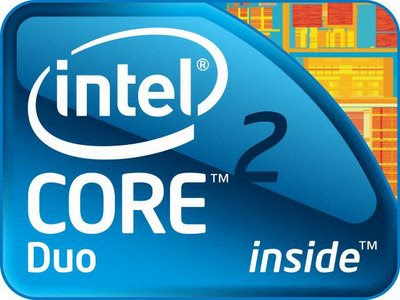Differences between Dual Core, Core 2 Duo, Core i3 and Core i5-6x series
This is only for show the differences between those CPUs, and a little guide to chose ur CPU but if u want know what is the best CPU for ur rig, create a thread with ur specific question, the main purpose of the rig, the components that u want install and the budget that u have for the build.
Let’s start:
1- The main and basic difference u can see it in the socket, the Dual Core and Core 2 Duo processors are socket 775 that are 65nm or 45nm depending of the model that u select, while the Core i3 and Core i5 are socket 1156 both Core i3 and Corei5 are 32nm. Here u can find an exception to the rule in the Intel G6950 that is a dual core, but socket 1156 and 32nm.



2- When u have a 775 socket, this use more power and produces more heat, also is more old that the new 1156 socket. Usually the 775 socket are DD2, but u can find some of this that works with both DDR2 and DDR3, while the Core i3 and Core i5 only works with DDR3.

I don't trust much in Hardware Canucks, but is only for the comparative just focus in the Core 2 Duo and core i5.
3- Component price is another important point here, it’s obvious that the 775 socket is more cheap and the components like mobo and DDR2 are more cheap too, but don’t have sense build a new rig with old components, u also can find expensive components for the 775 rig, but why spend more money in old components?
Since many people from here buy from the egg, IMO is one of the best sites to look for components: Newegg
4- Performance, all those have two cores, but not all those have the same threads number, the socket 775 (Dual core and Core 2 Duo) have two cores and two threads while the Core i3 and Core i5 have two cores BUT four threads.
You can find many performance charts in the web, is very easy look for it. See here
5- Both Core i5 and Core i3 support Hyper-Threading Technology while the Dual Core and Core 2 Duo don’t support this feature. Hyper-threading works by duplicating certain sections of the processor—those that store the architectural state—but not duplicating the main execution resources. This allows a hyper-threading processor to appear as two "logical" processors to the host operating system, allowing the operating system to schedule two threads or processes simultaneously, here is where the thread power of the Core i3 and Core i3 is showed.
If u need more specific information here are the main pages of the CPUs.
Core i5
Core i3
Core 2 Duo
Dual Core
Come back to the forum for specific information and advices about what CPU u need for ur rig.
This is only for show the differences between those CPUs, and a little guide to chose ur CPU but if u want know what is the best CPU for ur rig, create a thread with ur specific question, the main purpose of the rig, the components that u want install and the budget that u have for the build.
Let’s start:
1- The main and basic difference u can see it in the socket, the Dual Core and Core 2 Duo processors are socket 775 that are 65nm or 45nm depending of the model that u select, while the Core i3 and Core i5 are socket 1156 both Core i3 and Corei5 are 32nm. Here u can find an exception to the rule in the Intel G6950 that is a dual core, but socket 1156 and 32nm.



2- When u have a 775 socket, this use more power and produces more heat, also is more old that the new 1156 socket. Usually the 775 socket are DD2, but u can find some of this that works with both DDR2 and DDR3, while the Core i3 and Core i5 only works with DDR3.

I don't trust much in Hardware Canucks, but is only for the comparative just focus in the Core 2 Duo and core i5.
3- Component price is another important point here, it’s obvious that the 775 socket is more cheap and the components like mobo and DDR2 are more cheap too, but don’t have sense build a new rig with old components, u also can find expensive components for the 775 rig, but why spend more money in old components?
Since many people from here buy from the egg, IMO is one of the best sites to look for components: Newegg
4- Performance, all those have two cores, but not all those have the same threads number, the socket 775 (Dual core and Core 2 Duo) have two cores and two threads while the Core i3 and Core i5 have two cores BUT four threads.
You can find many performance charts in the web, is very easy look for it. See here
5- Both Core i5 and Core i3 support Hyper-Threading Technology while the Dual Core and Core 2 Duo don’t support this feature. Hyper-threading works by duplicating certain sections of the processor—those that store the architectural state—but not duplicating the main execution resources. This allows a hyper-threading processor to appear as two "logical" processors to the host operating system, allowing the operating system to schedule two threads or processes simultaneously, here is where the thread power of the Core i3 and Core i3 is showed.
If u need more specific information here are the main pages of the CPUs.
Core i5
Core i3
Core 2 Duo
Dual Core
Come back to the forum for specific information and advices about what CPU u need for ur rig.

